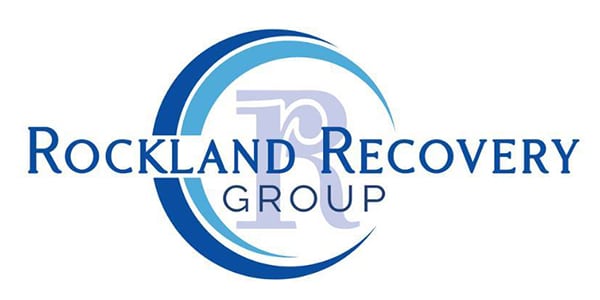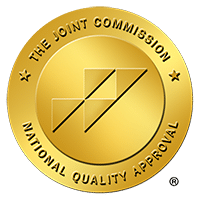Drug addiction is a complex disease that affects millions of people and their families across the country. Drug addiction includes a spectrum of addiction diseases, and understanding the different types of drug addiction is important for recognizing the signs and knowing when to seek help.
What All Types of Drug Addictions Have In Common
Substance abuse disorders can vary widely depending on the type of substance used and individual factors such as mental health, genetics, and the environment that a person spends time in. Even with these differences, there are some things that all types of substance abuse have in common.
Every type of addiction, regardless of the substance used, is a disease. Recognizing addiction as a disease is a critical step in not only seeking treatment but also in learning how to manage addiction for long-term remission. Seeing addiction as the disease it is, may also help family members better understand what their loved ones are going through and how they can help.
If you or your loved one are struggling with drug addiction, we at Rockland Recovery encourage you to reach out for help. Our care coordinators are available to take your calls and answer your questions at 888-299-4833.
The Substance Abuse and Mental Health Services Administration offers a wonderful comprehensive resource on addiction and mental health disorders. You can find these resources at samhsa.gov. They also offer a 24-hour National Helpline that can be reached at 1-800-662-HELP (4357).
Overview of Drug Addiction Types
The disease of addiction can affect each individual differently, often depending on the types of drugs used, the severity of the addiction, and if there are co-occurring mental health issues that may be contributing to self-destructive and addictive disorders.
Categorizing drug addictions isn’t always straightforward. For example, some individuals may have an addiction to more than one type of drug, which can cause treatment to be more complex.
The most common drug addictions can be broken down into several categories. Here, we take a closer look at drug-specific addiction information.
Prescription Vs Non-Prescription Drug Addiction
When looking at the different types of substance abuse, we can begin by separating addictive substances into two main categories – prescription and non-prescription drugs. Many non-prescription drugs fall into the illicit drug category, such as meth or cocaine. However, alcohol also falls into this category because it’s easily accessible with no prescription needed.
There is some overlap in the different substances abused in these two categories. An example of this is opioids, which are some of the most widely abused and dangerous drugs in both categories.
Prescription opioids include drugs such as oxycodone and legal fentanyl. Non-prescription opioids may include heroin or illegal fentanyl that is sold on the street or added to other illicit drugs.
Prescription Drug Addiction Types
Prescription drug addiction happens when a drug that a medical professional prescribes is misused. This includes taking more of the drug or using it more frequently than prescribed, as well as using it for purposes other than what it is intended for.
This category also includes individuals who take prescription medications that have been prescribed to someone else.
Prescription pain relievers are among the most commonly misused drugs. This includes drugs such as fentanyl, tramadol, morphine, codeine, and oxycodone. These types of prescription drugs can become very dangerous when misused. Combining prescription opioids with other medications, including benzodiazepines and alcohol, significantly increases the risk of accidental overdose.
Other types of prescription drugs that may be misused and lead to addiction include psychotherapeutic drugs, stimulants, tranquilizers, and benzodiazepines.
Opioid Addiction Types
Opioid drugs are highly addictive and can carry the highest risk of overdose among all addictive substances. Opioid drugs are pain relievers that are also capable of producing a sense of euphoria. Some opioids, like OxyContin or Vicodin, are commonly prescribed to relieve pain, and it sometimes happens that a person misusing a prescription opioid doesn’t realize that their use has become a problem until they’re already addicted.
Fentanyl is one of the most dangerous drugs, and is a driving factor behind the country’s “opioid crisis”. Fentanyl is extremely powerful, with a dose the size of two grains of salt being considered a lethal dose.
When someone is struggling with an opioid addiction, it’s important to seek help and begin the road to recovery with a period of detox followed by inpatient or intensive outpatient addiction treatment.
Stimulant Addiction
Stimulant drugs affect the central nervous system and increase activity by interacting with neurotransmitters. Their effect is generally one of increased energy, alertness, and attention. However, there is another side to stimulants that can result in feelings of paranoia, anxiety, and irritation or anger.
Like opioids, there are non-prescription and non-prescription types of stimulant drugs. Ongoing, unmonitored use of stimulant drugs can lead to health issues, and the risk of tolerance increases significantly.
There is typically a period of withdrawal when recovering from stimulant addiction, followed by a period of intense craving and learning how to adapt to life without stimulants. Young people, including those who are in high school or college, can be at a greater risk of stimulant misuse and addiction with the misuse of drugs such as Adderall or Ritalin.
Stimulant Addiction Examples
- Adderall
- Ritalin
- Concerta
- Dexedrine
- Meth
- Cocaine
- Bath Salts
Sedatives
Sedatives, also called depressants, have the opposite effect on the body that stimulants do. Sedatives work by depressing the nervous system, creating a feeling of relaxation. Sedatives are often prescribed to treat sleep disorders, such as chronic insomnia. Still, there is also a class of sedatives called barbiturates that are used to relieve pain and treat certain seizure disorders.
In addition to their effect on relaxation, sedatives can create a feeling of euphoria, which is a common shared characteristic of highly addictive substances.
Sedative addiction can be difficult to recognize. Misuse might begin by taking a prescribed medication when it’s not really needed, or taking them to achieve a sense of euphoria rather than for their true therapeutic benefits. Recovery from sedative addiction can be a difficult process, especially during the initial withdrawal phase.
Benzodiazepines
Benzodiazepines are types of sedative medications that are often prescribed to treat more severe forms of anxiety and a small number of other disorders. While benzodiazepines are highly effective for their intended medical uses, they are highly addictive due to how they interact with neurotransmitters.
Benzodiazepines can create a feeling of euphoria and well-being, especially at higher doses. Repeated use at these doses can quickly lead to an increased tolerance, which opens the door to becoming addicted. When misused, benzodiazepines can also cause extreme mood changes, including irritability, hostility, and tendencies toward explosive outbursts.
The combination of physical withdrawal symptoms and the effect on mental health can make benzodiazepines a difficult and dangerous category of drugs to withdraw from without medical assistance or supervision.
Alcohol Addiction
Alcoholism is frequently viewed as a different class of addiction, but alcohol is a drug, and alcohol addiction treatment requires the same dedicated approach as other types of addiction disorders.
A key difference between alcohol addiction vs drug addiction is that alcohol, along with being legal and easily accessible, is also socially acceptable. Due to its socially acceptable nature, alcohol addiction can be difficult to identify. Alcohol use disorder develops when an individual begins to lose control over their alcohol consumption, even when the effects on their health and life begin to become more obvious.
Withdrawal from alcohol addiction often requires medical supervision and is something that individuals shouldn’t attempt on their own. Like other types of addiction, alcoholism is a chronic disease that requires a dedicated approach to treatment that is tailored to the individual.
Finding Help for Different Types of Substance Abuse
If you’re concerned about your own drug use or you have a loved one that needs help, Rockland Recovery offers a continuum of care for addiction recovery to help you from the earliest stages of recovery through lasting sobriety.
We offer a highly skilled clinical staff and a holistic approach to care. Contact Rockland Recovery today at 888-299-4833 to learn more about the first steps to freedom from addiction.






